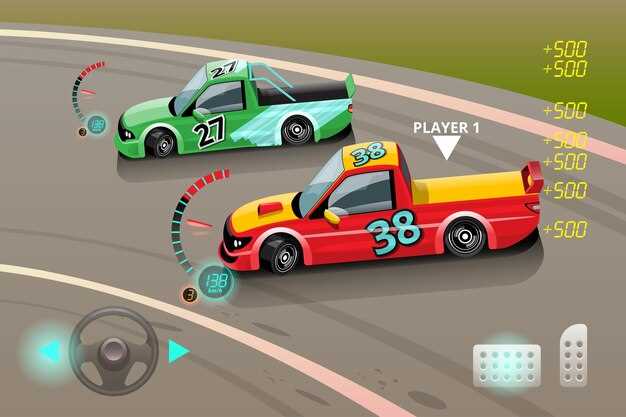Comparing VW Motorsport Cars vs Road Cars

The world of automotive engineering presents a fascinating juxtaposition when comparing VW motorsport cars to their road-going counterparts. While both categories bear the iconic VW badge, their performance characteristics diverge significantly, shaped by their intended purposes. Motorsport cars are designed for the track, where every ounce of power, agility, and precision can mean the difference between victory and defeat. In contrast, street cars are engineered for everyday use, balancing performance with comfort, efficiency, and practicality.
VW’s motorsport division takes inspiration from the advanced technologies and design philosophies that underpin their production models. However, the modifications made for racing are profound, with enhancements that include lightweight materials, optimized aerodynamics, and performance-tuned engines. Such alterations result in vehicles capable of achieving remarkable speeds and handling prowess that far exceed what is possible in typical street cars. This disparity highlights not only the engineering capabilities of VW but also the distinct goals of performance and usability in automotive design.
Understanding the differences in performance between VW motorsport cars and street cars reveals not just numerical statistics, but the essence of what each type of vehicle represents. Motorsport cars prioritize raw performance, while street cars focus on a well-rounded driving experience suitable for daily life. This comparison sheds light on the innovative spirit driving the automotive industry, as VW continues to push boundaries in both realms.
Key Differences in Engine Specifications Between Motorsport and Street Models

The engine specifications of VW motorsport cars differ significantly from their street counterparts, driven by the distinct requirements of racing performance versus everyday usability. Motorsport engines are designed for maximum power output, employing high-performance components and technologies that are not present in street models.
One of the primary differences lies in the engine tuning. Motorsport engines are often turbocharged with increased boost pressure, allowing for greater horsepower and torque. Street models, while they can also include turbocharging, typically operate at lower boost levels to enhance reliability and longevity for daily driving.
Additionally, race engines utilize lightweight materials such as forged pistons, titanium connecting rods, and advanced composites in their construction. These materials contribute to decreased weight and improved response times but are impractical for street vehicles, which prioritize durability and ease of maintenance.
Cooling systems in race cars are also highly specialized, designed to handle extreme thermal loads during intense driving conditions. Motorsport models often include larger radiators and more efficient oil coolers, while street cars have more conventional systems fitted for regular temperature management under typical driving scenarios.
Furthermore, the engine management systems differ significantly. Motorsport vehicles often feature advanced, bespoke ECU mappings that optimize performance for specific race conditions. In contrast, street models typically utilize more generalized tuning, balancing performance with fuel economy and emissions compliance.
Overall, the emphasis on raw performance in VW motorsport cars results in engines that offer vastly more aggressive specifications compared to street models, showcasing the divergence in design philosophy between racing and everyday usage.
Handling and Suspension: How Race Cars Outperform Street Cars
Handling and suspension systems play a crucial role in the performance of vehicles, particularly when comparing race cars to their street counterparts. Below are key factors that contribute to the superior handling abilities of race cars:
- Tuned Suspension Systems: Race cars are equipped with advanced suspension setups, specifically designed for optimal performance on the track. These systems utilize high-quality components, including adjustable dampers and stiffer springs, allowing for precise control and improved responsiveness.
- Lower Center of Gravity: Race cars typically have a lower center of gravity, achieved through design choices such as the placement of the engine and other components. This enhances stability and reduces body roll during cornering, leading to improved handling capabilities.
- Wider Tires: The tires on race cars are generally wider and have a larger contact patch with the ground. This not only increases grip but also contributes to quicker cornering speeds compared to street cars, which often prioritize comfort over performance.
- Active Suspension Technologies: Many race cars employ active suspension technologies that adjust in real-time based on track conditions and driving style. This dynamic ability allows race cars to adapt quickly, ensuring optimal handling in various situations.
- Stiffer Chassis: Race cars are built with stiffer chassis structures that resist twisting and flexing during aggressive maneuvers. This rigidity enhances the connection between the driver and the road, providing better feedback and control.
In contrast, street cars prioritize comfort and ride quality, resulting in suspension systems designed for smooth everyday driving rather than high-performance handling. Key differences are evident in:
- Damping Characteristics: Street cars often employ softer damping settings to absorb bumps, sacrificing performance for comfort.
- Spring Rates: The spring rates in street cars are typically lower, leading to more body roll during turns and less responsiveness.
- Wheel Alignment: Race cars are often aligned with aggressive geometry for better cornering, whereas street cars follow settings aimed at tire longevity and comfort.
Ultimately, the specific handling characteristics of race cars allow them to outperform street cars significantly. With a focus on high-speed stability, cornering ability, and driver feedback, race cars embody the pinnacle of automotive engineering devoted to performance.
Weight Reduction Techniques in VW Motorsport Vehicles

Weight reduction is a crucial aspect of enhancing performance in VW motorsport vehicles. Unlike their street counterparts, which prioritize comfort and practicality, competition cars focus on maximizing speed, handling, and agility. One of the primary techniques employed is the use of lightweight materials. Volkswagen often integrates carbon fiber, aluminum, and advanced composites into critical components such as the chassis, body panels, and suspension elements.
Another effective method is the removal or replacement of non-essential components. In motorsport settings, features such as sound insulation, excess seating, and standard glass are often stripped away or replaced with lighter alternatives. For instance, a racing car may utilize polycarbonate windows instead of traditional glass, which substantially decreases weight without compromising safety.
Furthermore, optimizations in the design of parts contribute to weight savings. Engineers focus on creating components that serve dual purposes or redesigning parts to eliminate unnecessary bulk. Techniques like hollowing out certain components or using intricate designs can significantly reduce weight while maintaining structural integrity.
Weight distribution is also a critical factor. Motorsport vehicles are designed with an emphasis on optimal weight balance, which enhances handling during high-speed maneuvers. Adjustments in component placement can lead to improved performance dynamics over street versions, as every kilogram saved can result in better acceleration and cornering capabilities.
Lastly, ongoing advancements in technology continually introduce new methods for weight reduction. Innovations in manufacturing processes, such as 3D printing, allow for the creation of complex shapes that were previously unattainable, further contributing to the weight-saving mission in VW motorsport cars. These practices exemplify how a dedicated focus on weight reduction not only differentiates motorsport cars from their street equivalents but also elevates their performance potential on the track.



